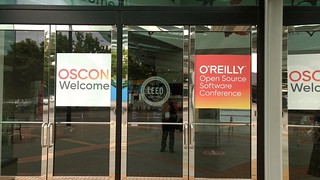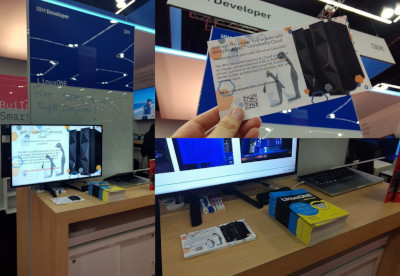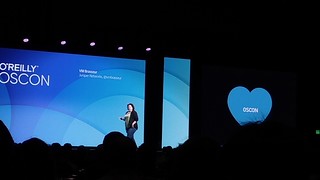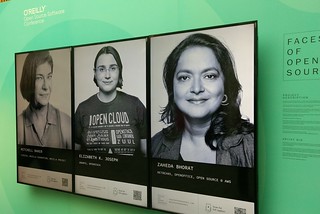Last month I had the opportunity to attend OSCON for the first time since 2015. It was nice to be back, the conference attracts a lot of great speakers, but it’s also a nice opportunity to see how the landscape has shifted when it comes to corporate sponsorship. Who has the big booths? Who has downsized? What are the top open source projects being promoted, and what products have come of them? This is all information you can infer from keeping up to date with tech news and broad open source community news, but it’s an experience to witness it first hand and see where companies really are investing.
My presence this year was all around LinuxONE, and I was joined by my colleague Leon Kiriliuk for our two days of booth duty at the event. Our push at these open source events is two-fold:
- Tell developers and infrastructure engineers that mainframes still exist, and geek out over hardware with them
- Invite them to create an account on the LinuxONE Community Cloud for a free virtual machine so they can test their applications there, and either start building for s390x, or publish they’ve tested it and it works
Given my long time interest in trying out alternate architectures, these are fun discussions to have, and with Leon there I learned a tremendous amount about the hardware that I wasn’t aware of before.
A short slide deck ran on rotation at the booth. The most popular slides were definitely the wall-of-logos showing a bunch of the open source software verified for LinuxONE, and the third slide which talks about the hardware. I made the deck available here: IBM_LinuxONE_-_OSCON.pdf (12M PDF)
Beyond the booth were talks. Aside from the general technical talks about various open source projects and products, I felt from the keynote that the conference had a trend around community building. It feels like just a few years ago that most companies investing in open source believed “people will just show up” if they build a compelling project. At minimum, most would invest in a couple developers who would review patches, but not much thought was put into actual development of the community. Today you see a lot more people employed as Developer Advocates (myself included) who are fully entrenched in the community and communicating improvements, and companies are taking community a lot more seriously. They’ve realized that real investment needs to be made in order to foster healthy communities that people want to contribute to and their customers gravitate toward, and the keynotes on the first day reflected that.
The second day of keynotes had a lot of discussion about where open source stands today and where it’s going. There’s have been several high-profile instances of re-licensing projects by companies who suddenly felt they can’t survive when large service providers start offering their projects as services on their platform. It was interesting hearing from speakers coming at this from different angles, from believing that new licenses and definitions are required, to simply developing a better understanding of how a company can thrive alongside large service providers.
Finally, it was really exciting to see the Faces of Open Source exhibit at the event. I had my picture taken for this last fall, when I was about 5 months pregnant! So I’ll admit, I hung out near the exhibit for a few minutes until I got to see my own smiling face. Bonus, it popped up alongside Mitchell Baker and Zaheda Bhorat!
Due to the arrival of my little one in January, this was the first generalist open source conference of the year I managed to get to, but it’s thankfully not the last. I’m off to the Open Source Summit in San Diego next week.
More photos available here: https://www.flickr.com/photos/pleia2/albums/72157710021063781





